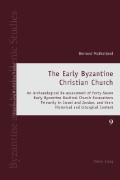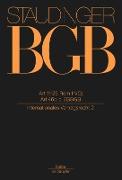- Start
- The Early Byzantine Christian Church
The Early Byzantine Christian Church
Angebote / Angebote:
The observation that domestic artefacts are often recovered during church excavations led to an archaeological re-assessment of forty-seven Early Byzantine basilical church excavations and their historical, gender and liturgical context. The excavations were restricted to the three most common basilical church plans to allow for like-for-like analysis between sites that share the same plan: monoapsidal, inscribed and triapsidal. These sites were later found to have two distinct sanctuary configurations, namely a Π, -shaped sanctuary in front of the apse, or else a sanctuary that extended across both side aisles that often formed a characteristic T-shaped layout. Further analysis indicated that Π, -shaped sanctuaries are found in two church plans: firstly a protruding monoapsidal plan that characteristically has a major entrance located to either side of the apse, which is also referred to as a ‘, Constantinopolitan’, church plan, and secondly in the inscribed plan, which is also referred to as a ‘, Syrian’, church plan. The T-shaped layout is characteristic of the triapsidal plan, but can also occur in a monoapsidal plan, and this is referred to as a ‘, Roman’, church plan. Detailed analysis of inscriptions and patterns of artefactual deposition also revealed the probable location of the diakonikon where the rite of prothesis took place.
Libri-Titel folgt in ca. 2 Arbeitstagen




